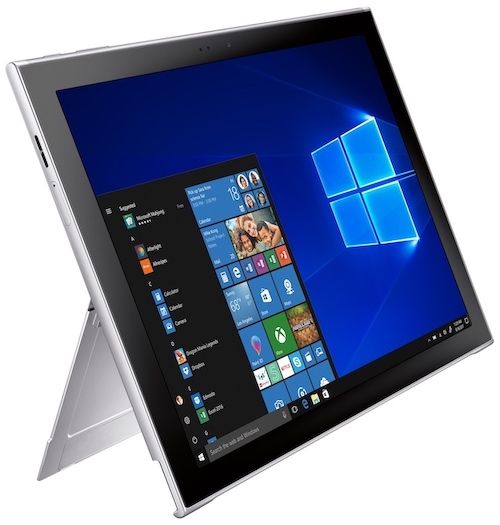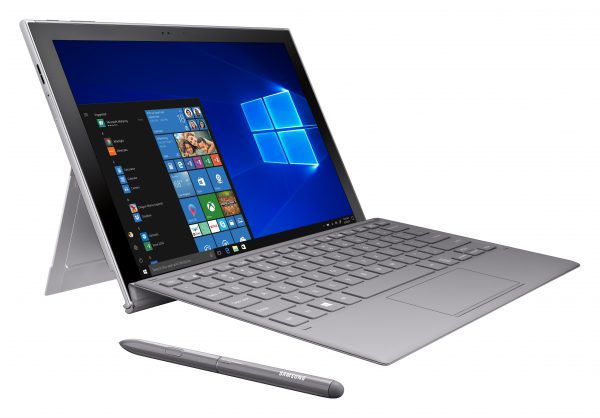Just weeks after the Surface Pro 6, Samsung has just uncovered their improvement on the Galaxy Book – the Galaxy Book2. Samsung’s with their new Galaxy Book2 is stepping away from their long abiding tradition of Intel processors. Samsung has managed to come up with a bright, powerful, sleek yet a sensible display that is perky enough to carry around for the entire day.
In the Book
Samsung’s latest notebook as the second-generation device that ditches the Intel hardware Core M3 and Core i5 configuration options for a Qualcomm Snapdragon 850. Samsung has improved the advanced system on a chip (SoC) by coupling it with a potent octa-core processor that includes an onboard graphics processor for stellar all-around performance and productivity. But, that’s not all the new Samsung 2-in-1 has to offer.
“The way the world works is undergoing an incredible transformation, and users need technology that keeps them connected and ready for anything when they’re out in the world getting things done,” said Alanna Cotton, Senior Vice President and General Manager at Samsung Electronics America.
“The Galaxy Book2 brings together Samsung’s hardware and connectivity leadership with innovations from Qualcomm Technologies, Inc. and Microsoft for a two-in-one that uniquely delivers PC productivity and superior mobility.”
The design too has been overhauled. The revamped design is quite similar to the Surface. Nonetheless, the Galaxy Book2 still looks a lot like the swarm of 2-in-1 convertible Windows 10 tablets in the market. Samsung claims that the Galaxy Book2 is capable of gigabit-class LTE – a feature that was an optional addition in the past Books. The X20 LTE modem in the notebook offers 4G connectivity so you’re always connected to your network data like in your smartphone.
The Galaxy Book 2 is also capable of lasting a “multi work day” on a single charge. To be specific, the battery estimate is up to 20 hours if the device is running of the Windows S operating system that it is shipped with. That is a commendable improvement from the 11-hour life of the Galaxy Book. The company however, has decided not to lose the 4GB of built-in RAM but did bump up the default storage from 64GB to a decent 128GB as a default setting.
The Super AMOLED display’s resolution is pretty neat too, offering 216 pixels per inch with its 2,160 x 1,440 panel. The Galaxy Book 2 packs a bunch of ports including a microSD card reader, a pair of USB-C, and a 3.5mm headphone jack.
The Galaxy Book2’s speakers include Dolby Atmos support. Just like its flagship phones, Samsung has tuned the sound with the company’s AKG division. You will also find a fingerprint sensor and infrared camera on the back of the device for secure login via Windows Hello. The camera: fine, but for the fingerprint sensor its an awkward enough position.
Outside the Book
The addition of the rear kick stand adds convertibility to the Book. That sticking to the current trends, is a must-have these days in notebooks. The Surface Pro-like hinge allows you to angle the 12-inch display on a flat surface. The box comes with an included keyboard that magnetically attaches to the bezel on the bottom, inspired much from the Surface keyboard. The body is more or less the same as the Galaxy Book.

Though it does have an additional hinge and a back stand but apart from slimming down the bezels a bit and changing curved corners to square ones, there isn’t much to be excited about the exterior. Moreover, the new and improved 2-in-1 Book is slightly larger and bulkier as well. But not so much that we wouldn’t call it portable.
Pricing and Availability
Get the Samsung Galaxy Book2 boxed with an S Pen stylus and keyboard, and it will cost you $999. The launch of the device is expected to be on November 2nd on AT&T, Microsoft, and Samsung’s online stores. Now the Apple’s 12.9-inch iPad Pro and Microsoft’s Surface Pro 6 priced for $799 and $899 respectively, do not come with the included options of a stylus and keyboard cover. So there goes the affordability of these devices.
The overall verdict of tech reviewers has been mostly positive. All of them are pretty ecstatic about testing the 20 hour battery life. We have seen good stand ups from Snapdragon machines in the past and getting out from S mode to Windows 10 is going to be easier than ever. While most of us can vouch for the performance, productivity, and longevity of the device, it’s a little too soon to comment if the Intel to Snapdragon jump was a wise move for Samsung.
Read More by us:
- Everything you need to know about Microsoft’s New Surface Laptop 2
- What does Apple hold for us with their iPad Pro in the Fall 2018 event?
- Samsung introduces the ‘Always On’ version of their Chromebook Plus V2 with 4G LTE




